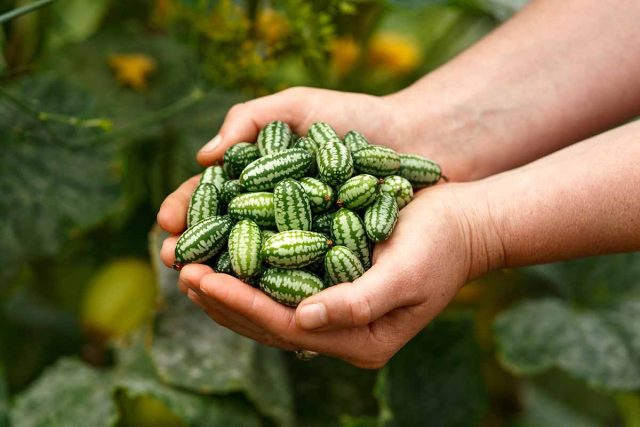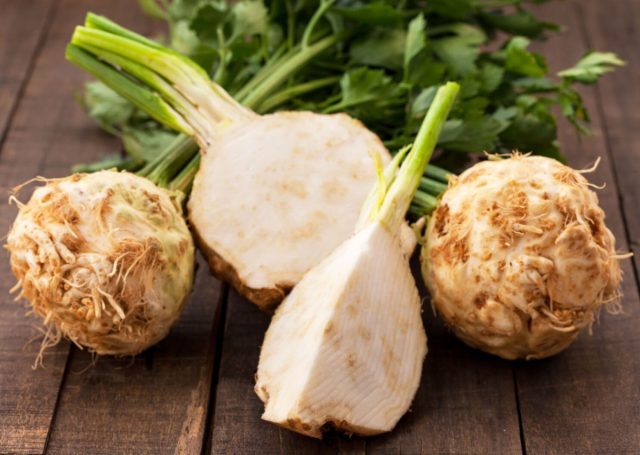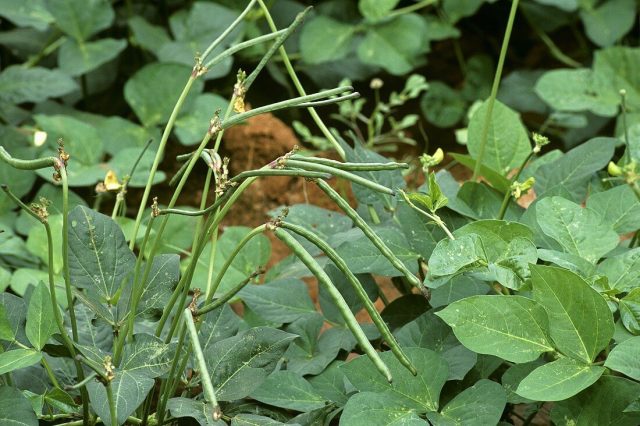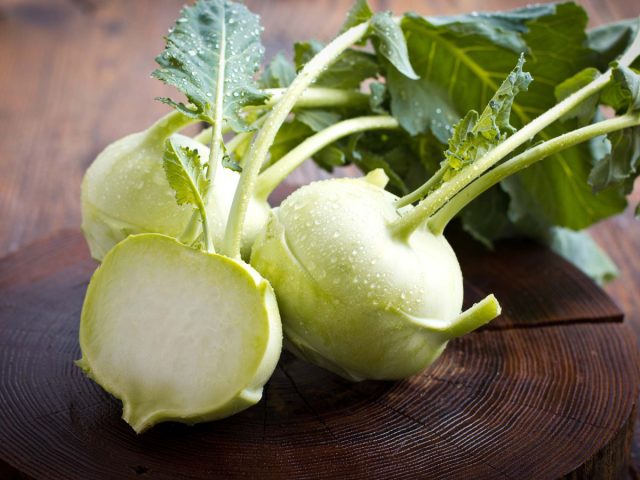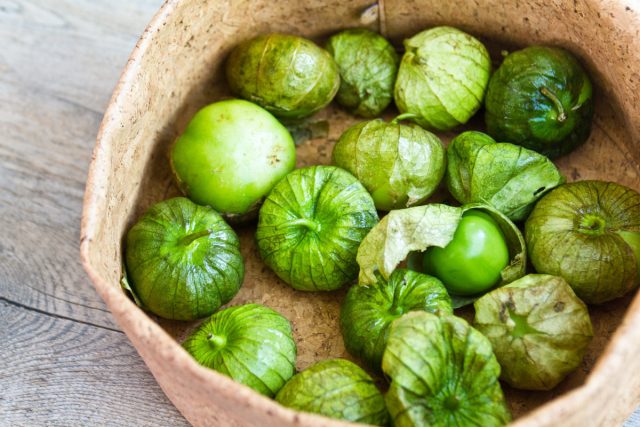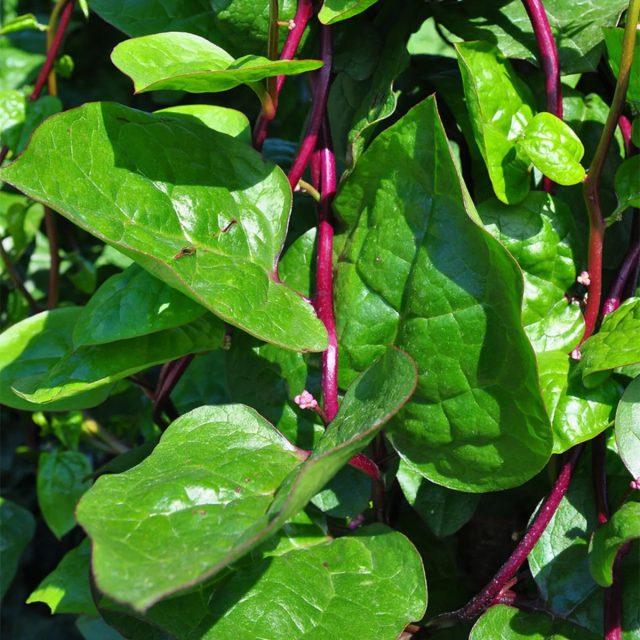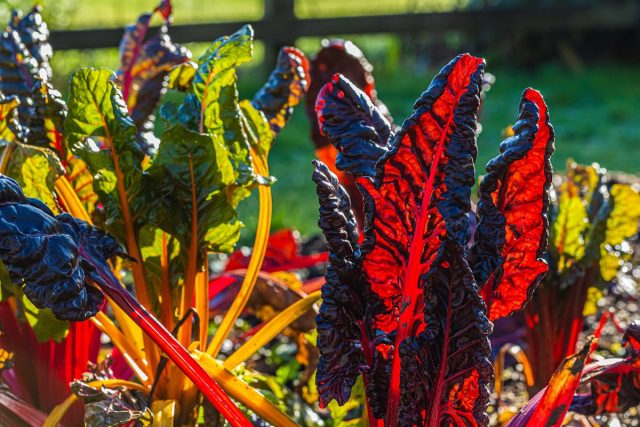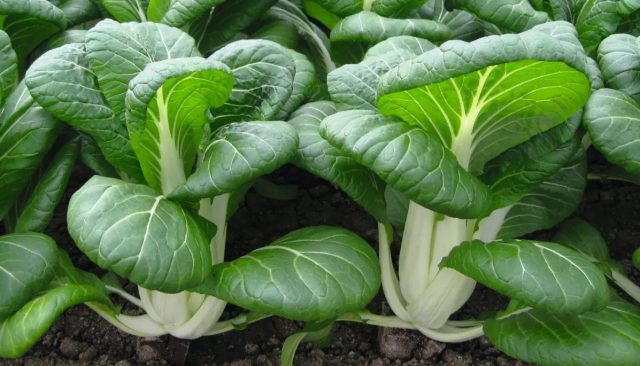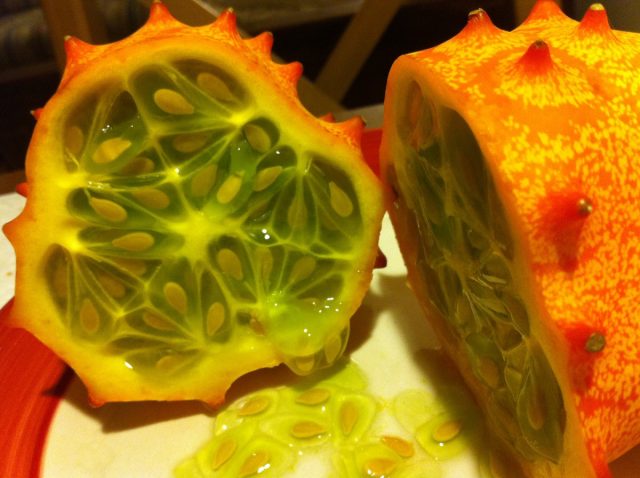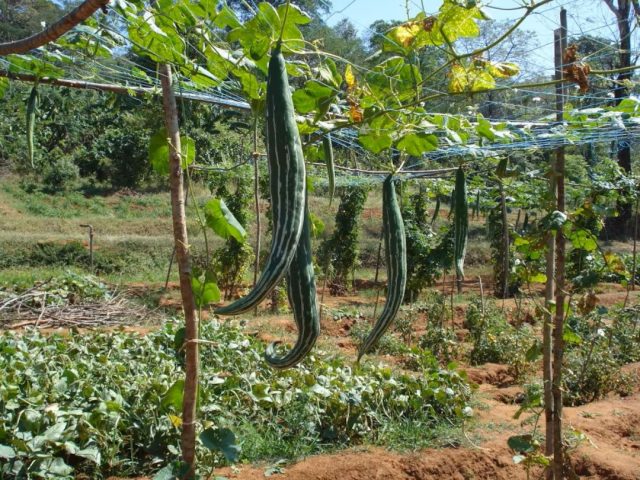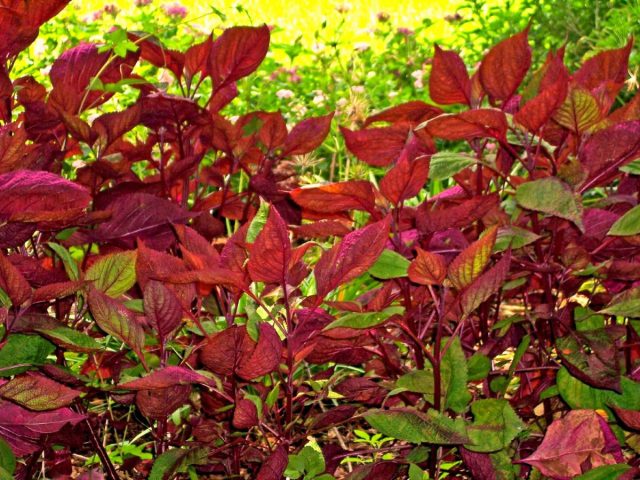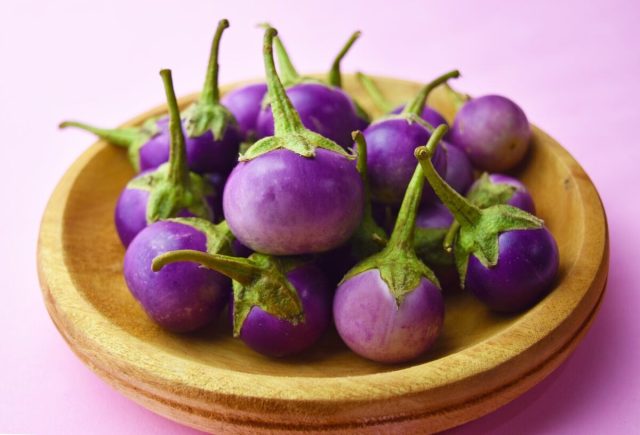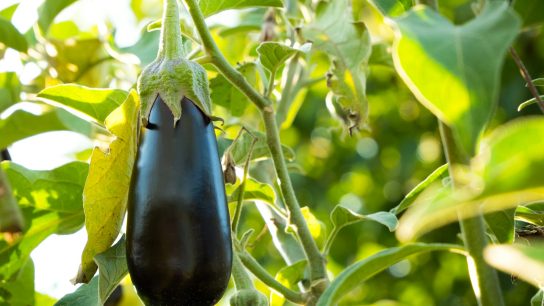In addition to the usual tomatoes, potatoes, and peppers, you can grow many other vegetables in the garden. So why not try something new? There is a rich variety of unique crops that will make great additions to your garden. Many of them cannot be found in the store. Growing unusual varieties will add excitement and variety to your menu and just plain fun.
1. Romanesco cabbage
This vegetable tastes like broccoli or cauliflower; even their growing conditions are very similar. Romanesco has a very beautiful fractal pattern and pyramidal shape, which makes it more attractive compared to other vegetables. Although it is often referred to as broccoli, it is actually a variety of cauliflower. With beautifully detailed designs, this may be the most original vegetable you’ve ever seen.
Romanesco is known not only for its fun appearance but also for its taste, reminiscent of broccoli with a nutty flavor. This vegetable can be served raw, steamed, stewed, or pickled.
2. Cucamelon
The vegetable is also known as mouse melon. Outwardly, it looks like a small watermelon, but the taste is more like a cucumber. Cucamelon vines can grow up to 3 meters in length and produce hundreds of fruits on a single plant. Growing conditions are similar to those of cucumbers: they need plenty of sun and warm weather. At the same time, they are more cold-resistant and resistant to pests than ordinary cucumbers.
Cucamelons are very easy to grow as long as you provide them with vertical support. The small fruits are juicy and crisp, but the skin can become tough if the fruit is left on the vine. Plant the plant in a sunny location, ideally with protection from the wind. It will grow best in a greenhouse.
3. Celery root
The root vegetable tastes similar to leaf celery but has a nuttier flavor. Celery has a very long growing season. At least 7 months must pass from sowing to harvest. Root celery should be sown in January-February.
There are many ways to consume this vegetable. It can be eaten raw or cooked. The winter root vegetable is grated raw, boiled, or stewed. It can also be cut into cubes and added to stews or soups.
4. Ground almonds, or chufa
This crop is a cereal that produces many sweet nodules underground, a bit like peanuts. Chufu can be grown in temperate climates, although the plant prefers warmer regions. In particular, this African plant is traditionally grown in Spain, where it was brought by the Arabs. Chufa tastes like a combination of almonds and coconut. It is best to plant it in a warm and sunny location and water it thoroughly.
5. Vigna
Each bean of this amazing plant can grow up to 60 cm in length and grow by several centimeters per day. The taste is somewhat reminiscent of green beans but with a more distinctive flavor. It is best to cook these beans in oil or deep-fry, as they are not very tasty when cooked.
Cowpea is a climbing plant, which is ideal if you want to grow a lot of food in a small space. The pods are delicious and have a mild flavor, and the dried beans are good in soups and stews.
6. Kohlrabi
This purple or green vegetable looks like an alien culture! It will definitely add a unique touch to your vegetable garden. Kohlrabi belongs to the Cruciferous family but can be used in cooking in the same way as turnips.
This vegetable prefers cooler temperatures to grow, so it is best grown towards the end of summer. Kohlrabi should be harvested as soon as the heads reach the size of a tennis ball. In this phase, they have a sweet, mild taste, but when overripe they become harsh.
7. Tomatillo
This crop is very common in Central American dishes, and the fruit can be eaten raw or cooked. They are best known as an ingredient in the famous green sauce, Salsa Verde.
Tomatillo grows in an edible shell-like physalis. A slightly sticky “papery” husk surrounds the hard green fruit, and when the husk begins to dry out, it cracks. As the berry ripens, it changes color from green to light brown.
Tomatillos are harvested unripe when they have a very tart flavor, very different from their close relative, the tomato. Ripe fruits are sweet, tart, slightly fruity, and slightly earthy in taste. When raw, they are quite sour, but after cooking they acquire a milder taste.
Because tomatillos have a long growing season, they can be sown indoors eight weeks before the last frost date.
8. Malabar spinach, or basella
This leafy vegetable is a vine with beautiful red stems and delicious fleshy leaves. They are ideal for salads or stir-fries as a substitute for traditional spinach.
The perennial plant is grown as a houseplant or as an annual in regions with cold winters. Malabar spinach loves rich, fertile soil and grows best in full sun. It is grown by seedlings, sowing seeds in March in separate cups.
9. Chard
Chard is a close relative of beets and belongs to the Amaranth family. It does well in a variety of temperature conditions, from cool to warm. This leafy vegetable is rich in nutrients and is considered a superfood as it contains high amounts of minerals, phytonutrients, vitamins A, K, C, and fiber.
Growing Swiss chard is relatively easy because it adapts easily to a variety of conditions. It will thrive whether you have beds in full sun or a partially shaded area. Thanks to the variety of varieties, it is possible to grow colorful chard with petioles of yellow, red, pink, purple, orange, and white.
10. Pak-choi
The vegetable has many nicknames: Chinese cabbage, Chinese chard, and Chinese mustard. As you can tell from the name, pak choy, a leafy vegetable, is most often used in Asian dishes. It is a rosette of long, wide leaves with succulent petioles. The bushes can grow up to 30 cm in height and up to 45 cm in width. The slightly mustardy vegetable flavor makes it an ideal ingredient for stir-frying and adding to vegetable and meat stews.
11. Kiwano
Have you tried horned cucumbers? They look like dragons ready to attack you, but they taste like amazing vegetables. Their pulp is slightly gelatinous and tastes like a mixture of tropical fruits: banana, lime, and other citrus fruits. Kiwano can be eaten fresh, in juice, or frozen in desserts.
In the middle zone, this vegetable can be grown as a heat-loving annual. Just make sure it grows in nutrient-rich soil as it has a decent appetite. It is advisable to sow kiwano seedlings from early April to mid-May.
12. Trichosanth serpentine, or Snake gourd
Want to scare your neighbors? Plant some snake gourds in your garden beds. This vegetable belongs to the Pumpkin family. It tastes similar to green beans and is used in a similar way to beans in Chinese cuisine. Usually cooked with onions, peppers, and tofu. You can also peel the inside of the pulp and use it as a thickener and seasoning in soups and sauces.
You can grow these plants like a regular pumpkin. But it is better to place them on strong vertical supports, as the lashes become huge over time. Seeds are sown for seedlings in separate cups in the second half of April. Planted in beds in mid to late May.
13. Perilla
This tasty relative of basil and mint is grown throughout Asia as a herb and leaf vegetable. It can be added to soups, broths, stews, wrapped in sushi, or brewed as tea. Perilla leaves are used both fresh and dried, and even pickled. The foliage and seeds taste like a cross between mint and hyssop.
Perilla is sometimes used in flower beds in combination with flowering annuals and is well-suited for an ornamental vegetable garden. Please note that the plant may be toxic to domestic animals such as cattle and rabbits. So be careful when you grow it.
14. Thai eggplant
Thai eggplants are not at all like traditional ones. It is a type of nightshade: the fruits resemble green peas, collected in clusters. They are consumed unripe. Thai eggplant is the name of several varieties used in Southeast Asian cuisines, especially Thai and Cambodian. They are most often cooked with curry sauces, which makes them softer and absorbs the flavor of the seasonings. Thai eggplant can also be eaten raw in salads or pastas.



